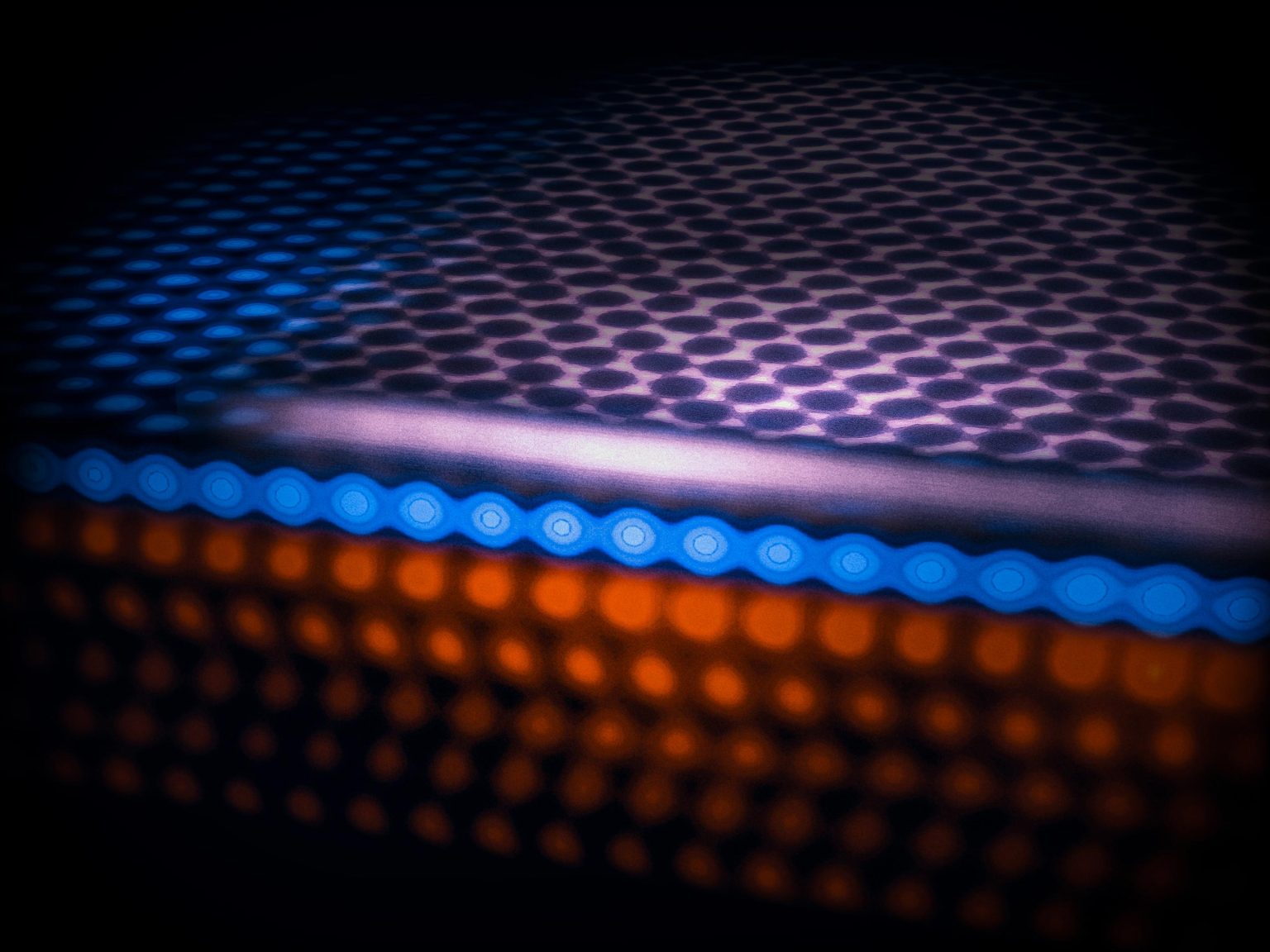"Schematic representation showing how a graphene layer protects against water. The electrical current flowing along the edge of the topological insulator indenene remains completely unaffected by external influences. Credit: Jörg Bandmann, pixelwg" (ScitechDaily,Quantum Leap in Ultrafast Electronics Secured by Graphene’s Atomic Armor) If electricity transports water in one direction. The system can use the same effect to transport miniature robots on water.
"Amalgamation of experimental images. At the top, a scanning tunneling microscopy image displays the graphene’s honeycomb lattice (the protective layer). In the center, electron microscopy shows a top view of the material indenene as a triangular lattice. Below it is a side view of the silicon carbide substrate. It can be seen that both the indenene and the graphene consist of a single atomic layer. Credit: Jonas Erhardt/Christoph Mäder)" (ScitechDaily,Quantum Leap in Ultrafast Electronics Secured by Graphene’s Atomic Armor)
New electric systems require an extremely good insulator. Nanotechnology means that old-fashioned insulators are useless. A graphene membrane can protect components against water. The electric flow in the graphene makes it a good insulator that denies the inner side of the topological insulator getting outside effects. That kind of thing makes graphene one of the most interesting materials. The same thing that can make graphene repel water can be used in new nanotechnical solutions.
One of them is the nano-size robot that can hover above water. The system can make an electric load on graphene, and the system can hover above the layer using some nano-acoustic systems. That thing can make the small graphene hovercraft rise above the water layer.
In a graphene structure, the fullerene balls are like small wheels that transport the miniature machine forward. There is the possibility that nano-diamonds send acoustic waves that make this system hover and move at least in liquids. In nanotechnology, small sizes of machines make them more effective and behave in other ways than their "big versions".
In some models, graphene can trap water molecules. When the system turns the minus or plus poles in a certain way. It can be used to aim ion beams into the right position. The system can put behind the object, and then the ion cannon shoots ions. In that case, the opposite electric pole pulls ions into it. And that increases the ion system's accuracy.
Graphene can also be used to trap water in it. The ability to change the direction of the water molecule makes it possible to create ultimate stealth materials. If the system can turn the molecule's positive or negative side outside, that thing makes this thing possible to create a layer that can pull electricity or radiowaves in it.
https://scitechdaily.com/quantum-leap-in-ultrafast-electronics-secured-by-graphenes-atomic-armor/
https://learningmachines9.wordpress.com/2024/03/05/graphene-as-an-insulator-and-nano-size-hovercraft/




No comments:
Post a Comment
Note: Only a member of this blog may post a comment.